10 Innovative Ideas from the 3/11 Response
As with any disaster, there have been both successes and missteps in the relief and recovery efforts in Japan after the March 11, 2011 earthquake and tsunami. There have also been many innovative responses that take advantage of the latest technology and new thinking. Here are 10 great ideas that nonprofits, businesses, government agencies, and disaster survivors themselves have come up with—and which can be emulated when disasters strike elsewhere around the world.
1. Not Just Shopping
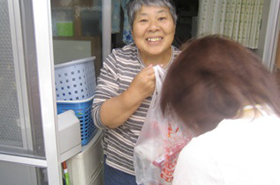
Senior citizens and others who have been separated from their community in the wake of the 3/11 disaster can become socially withdrawn, threatening their mental and physical wellbeing. Plus, many have been resettled far from shops and services, and their access to transportation is limited. But a group called Sankaku Planning Iwate has come up with an innovative solution to help at-risk individuals. They hire local women who are also survivors of the disaster to provide shopping services for people in temporary housing. They check in regularly with their clients to take orders for groceries and deliver them in person. The fee is ¥100 (about $1) per delivery, which makes people feel that they are paying for a service rather than receiving charity—an important point in a society where dignity is prized. Through regular interaction, the “shoppers” can then keep an eye on their clients’ physical and mental health, engage them in extended conversations, and refer them to counseling and other care when needed.
2. Innovative Financing for Small Businesses
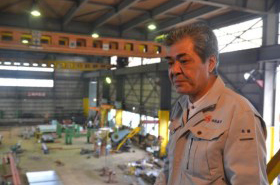
Small business owners throughout Tohoku want to reopen their restaurants, shops, and factories, but they face a major obstacle. Many still have to repay large debts for facilities and equipment that were destroyed in the tsunami, but without collateral it is difficult to obtain new lines of credit to rebuild. Two nonprofits, MercyCorps and PlaNet Finance Japan, came up with a creative solution—partner with local cooperative banks. They provide small grants to cover the costs of restarting businesses, as well as subsidies to lighten the cost of hiring employees. Meanwhile, the banks provide loans with highly preferential terms. Business owners get a two-year grace period before they have to begin repayment and the nonprofits cover the interest payments for this period. In the end, the businesses get back on their feet, the banks regain customers, employment increases, and the community recovers. As of 2014, this program has supported over 300 businesses and 1,000 jobs.
3. Wish Lists for Disaster Relief
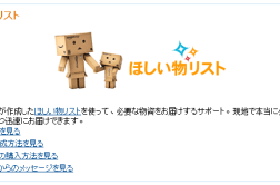
Whenever disaster strikes, there is an outpouring of donations of relief supplies. The problem is how to make sure that donated supplies get to those who need them, and how to ensure that donated items meet the real needs of disaster victims. After the 3/11 disaster, Amazon began applying its “Wish List” concept—similar to a wedding registry—in order to match donors and donees, ensure that the needs of victims are met, and create a more effective distribution system. NPOs working in the Tohoku region and individuals who were affected by the disaster are creating wish lists of items they need. For example, a library struck by the tsunami is requesting specific books that it wants; a group that delivers relief supplies to local residents who are not receiving government aid is requesting food, soaps, and other items; a number of families requested help buying new furniture as they rebuild their homes; and one individual who had taken in 40 stray cats and 2 dogs was asking for pet food as she looked for new owners for the animals. Those wanting to help can go to the Amazon website, browse the lists, and purchase requested items that are then sent directly to the organization or person in need.
4. Saving Memories
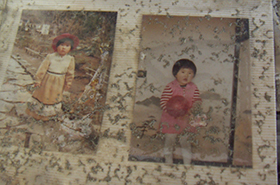
For disaster survivors who have lost everything—their homes and even their loved ones—photos found among the mud and rubble are precious keepsakes. Volunteers in Japan mobilized to collect and “wash” these photos, which were then displayed at evacuation centers and other local facilities to be sorted through and picked up by their owners. In addition, many “photo washing” groups were formed around the country to clean and dry the pictures and then ship them back to Tohoku. Recognizing the potential psychological impact that returning photos can have on survivors, major corporations played an important role as well. Fuji Film, for example, launched a Photo Rescue Project that brought together thousands of volunteers—both company employees and the general public—to clean and restore hundreds of thousands of photos. The company also invested considerable time and energy into disseminating information about proper photo cleaning techniques so outside volunteer groups could repair photos on their own.
5. City Halls Staffing City Halls
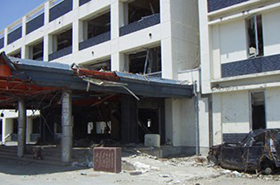
Municipal governments have to shoulder a heavy burden in responding to disasters. But that burden has been even greater in the Tohoku region, where local governments have been left understaffed after an inordinately large proportion of officials lost their lives when they remained at their duty stations to manage the evacuation from the impending tsunami. Other local governments around Japan have helped out, though, by dispatching teams of officials to temporarily staff city halls around the disaster zone. In the first year after the disaster, for example, Nagoya loaned 144 city employees to Rikuzentakata, which lost 68 officials—nearly one-quarter of all city employees. Having temporary staff with experience in local administration to support their back-office operations and other functions has enabled city halls to continue providing basic services while starting to chart the path for the long recovery ahead.
6. Give a Donor a Fish
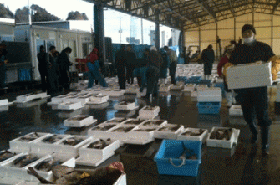
Small businesses need to get back on their feet for local economies to recover after a disaster, but they have less savings and less access to capital than large businesses. An intriguing model has been pioneered by organizations such as Music Securities that allow concerned investors to contribute funds to the small fisheries and cooperatives that are a pillar of the Tohoku economy. Contributors put money in a fund that supports a particular business—often for as little as $131 (¥10,500)—and, depending on the individual scheme, a portion of the money counts as a donation while the rest counts as an investment yielding returns. For many contributors, though, the most meaningful return is the product that the small business pledges to send to each investor—a gift box of salmon, a bucket of oysters, etc. This helps to cement the emotional ties between the donor/investor and recipient while also promoting local products from the disaster zone.
7. Keeping Exchange Students in School

When disasters strike, families with children in college—especially those studying abroad in costly places like the United States—often face difficulties in paying tuition and living expenses. However, students who drop out find themselves in a deep hole. They return home to a disaster zone—if they even have a home left—with no degree to show for their efforts and dismal job prospects. Some US groups have taken steps to help, though. After March 11, the NY-based Institute of International Education (IIE), which promotes foreign study in the United States, quickly established an emergency fund and set out to identify students around the United States from the disaster area. With support from the Freeman Foundation, IIE’s Emergency Student Fund was able to provide 110 students from the Tohoku region with emergency grants to continue their studies, keeping them from having their futures further compromised by the disaster that struck their families.
8. A Peace Corps for NGO Support Staff
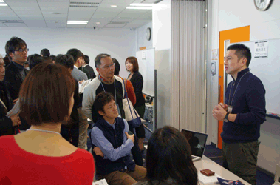
NGOs are playing a larger role in the Japan disaster response than they have at any other time in Japanese history, but they continue to be plagued by limited capacity, tight finances, and a lack of human resources. This has left nonprofit leaders stretched too thin and trying to do everything themselves. ETIC (Entrepreneurial Training for Innovative Communities), a Tokyo-based organization, is helping to alleviate this problem by hiring and dispatching 200 promising future leaders as support staff on three-month to one-year assignments over the next three years to assist nonprofits and other groups in the disaster zone. ETIC is covering the costs for their salaries and training, and these “fellows” serve as right-hand men (or women) to the groups’ leaders while getting a foot in the door in the nonprofit field.
9. Dispatching Food Trucks
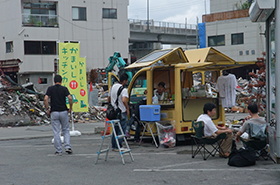
With their restaurants destroyed and months or years needed to rebuild, what are chefs to do? Initiatives like the “Kamaishi Kitchen Car Project” provide an answer—rent food trucks at subsidized rates so that chefs can provide fresh, low-cost food to local residents, while giving the chefs a source of income as they get back on their feet and prepare to reopen their restaurants. Another benefit of the food trucks’ mobility is that they can jumpstart local economic revitalization by gathering in areas where small businesses are starting to reopen in order to draw foot traffic.
10. Crowdsourcing the Search for the Missing
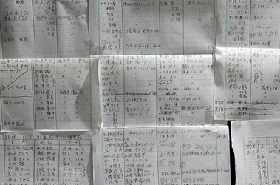
Google deployed its online “Person Finder” database to help reunite loved ones after the Haiti earthquake, but it proved difficult to collect information in Japan’s disaster zone, where there was no Internet access and limited telephone service. A creative employee suggested using cell phones—which sometimes could transmit data in the disaster zone—to photograph the handwritten lists of survivors who had been spotted and the names of missing being sought that were posted on the bulletin boards in evacuation shelters. Then these were uploaded to a website and crowdsourced to an army of volunteers who transcribed the Chinese characters so they could then be entered into the searchable Person Finder database.
